IL-2: Great Battles latest WWII aircraft type is the Hawker Typhoon Mark IB. This well armed fighter fills a gap in the Allied tactical fighter force and brings us one step closer to the completion of the IL-2: Battle of Normandy expansion in the series. What’s this aircraft like, how does it perform in combat and how does its varying historical reputations match up with this late war example of the fighter? Read on!
A stormy history

I always like to start off my IL-2 aircraft reviews with a short history and with the Typhoon I feel like one is especially necessary as the Typhoon and Tempest are often confused for each other and their respective (and connected) histories often jumbled and mixed.
Just two months after the debut of the Hawker’s new Hurricane fighter in 1938, the company’s designers were given a new specification by the air ministry for an aircraft with even greater performance. F.18/37 called for a fighter to be powered by one of two experimental engine prototypes being readied – Rolls Royce’s Vulture and Napier’s Sabre. Hawker’s chief designer, Sydney Camm, would be brought in to once again design the new interceptor producing the Hawker Typhoon, powered by the Sabre engine, and the Hawker Tornado, powered by the Vulture. As the story goes, the Vulture proved so unreliable that the project was cancelled, leaving just Napier’s unconventional H block, 24-cylinder, 2,000hp engine in the running.
The Typhoon’s early acceptance into service didn’t go well. High altitude performance of the Sabre was disappointing, there were constant reliability issues including carbon monoxide leaks into the cockpit and frequent issues with fires on engine start. High speed dives proved to be an issue too with some tail units separating from the aircraft.
But the Typhoon did find a niche as Luftwaffe units stepped up their fighter-bomber campaign against the south of England. The Typhoon’s low altitude performance was superb and Typhoon interceptor units were able to overhaul Fw190 attackers crossing the channel in numerous dramatic encounters.
In 1943 the Typhoon began taking on a new role experimentally – that of a fighter-bomber. Increasingly more powerful bombs were attached to the bottom of Typhoon’s and used against targets on the continent. By 1944 and the invasion of Normandy, the Typhoon had taken on a second life as a full-time tactical fighter-bomber where its robust construction, excellent low altitude performance, heavy firepower, and variety of rocket and bomb types proved useful.
Problems were solved as well with engine reliability improving and procedures being implemented to deal with some of the other problems. Adding the Tempest’s tailplane to the Typhoon and reinforcing the tail section resolved the tail unit separation issue although official documentation recommended avoiding high speed dives through to the end of the war.
The Tempest project followed the Typhoon utilizing much of the Typhoon’s structure but with dramatically redesigned wings and tailplane. This, in effect, created a whole new aircraft with better performance at all altitudes and solving a lot of the problems of the earlier Typhoon in the process.
Flying on the wings of a storm
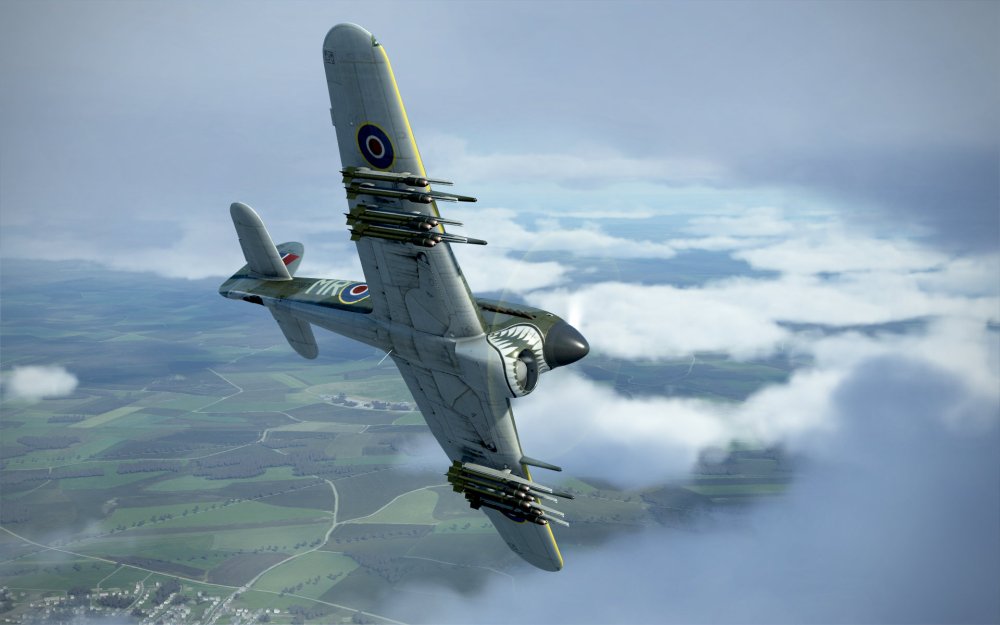
That’s the history but what is the aircraft like to fly in IL-2: Great Battles?
Those familiar with the Tempest from IL-2: Battle of Bodenplatte will find the Typhoon to handle very similarly to the Tempest in many respects. Takeoff remains challenging thanks to the massive power of the 2,000hp engine while landing is relatively straight forward. Elevators are impressively effective at most speeds and situations which gives the Typhoon and Tempest the ability to pull tightly over a short period of time – critical for getting those snapshots in a tricky situation.
They diverge as well. The Typhoon is known as one of the slowest rolling fighters of WWII and that is absolutely represented here. While the Tempest is light and easy to roll, the Typhoon resists all but the most determined left or right stick and rudder coordination is essential to get the best rate.
In several multiplayer situations, I found myself struggling at high speed to try and match a Fw190 or Bf109 using roll rate defensively. One Fw190 rolled away from me so successfully that he turned the tables and would have been able to capitalize on that had I not had a wingmate just behind him.
Modifying the fighter-bomber
The Typhoon comes equipped with some potent firepower. We start with those four 20mm Hispano Mark II cannons which come with 140 rounds per gun. They fire slightly slower than the Mark V Hispanos on the Tempest, but I find them no less devastating when they hit home against both ground an air targets.

The Typhoon also comes with default 500lb and 1,000lb bomb options as well as three key variations of the RP-3 rocket type. The first is the Mark I rail and eight RP-3 rockets in either HE or AP types. The second is an iteration of that Mark I rail type with twelve RP-3 rockets with eight of the rockets tied together and firing together. This was used but not quite as frequently as the Mark I rail. Finally, we have the late war Mark III rail which is slimmer and causes less drag and also allows for the carriage of eight RP-3 rockets.
There are a few other modifications available that aid in its role too.
There’s a frameless gunsight which replaces the default gunsight with the Tempest’s style of sight with the piper projected onto the windscreen directly.
Next, the Typhoon can be equipped with a four-blade propeller. This provides for a 7.5-mph improvement in speed performance and a 453 foot-per-minute climb rate improvement. That aids the Typhoon in late war battles while the three-blade version is more representative of a fighter being flown during the Battle of Normandy time period.
The Typhoon also has the +11lb boost modification for the Sabre IIA just as with the Tempest. This also adds a 14-mph improvement in low altitude speed performance. This improvement together with the flour-blade propeller adds a total of 21-22 mph improvement overall which is seriously impressive.
Additional armor is available around the engine. In practice this is little use against aircraft based 20mm and 30mm weapons but against small arms fire and light AAA, it offers an added degree of protection. It carries a minimal weight and speed penalty and I would recommend on any fighter-bomber mission.
Finally, there’s the dome dust deflector. This is a historical consideration and most Typhoon’s operating on the continent were used with the deflector. Those operating from England with less dusty airstrips were not fitted with these. It comes with a minimal penalty in speed.
The risky business of the fighter-bomber
One of the challenges that we had with the Typhoon but an issue that is not specific to it is the risky business that is the life of a fighter-bomber pilot. Be it online or off, the Typhoon is going to often be tasked with attacking some sort of target be it a column of tanks or vehicles, a train an airbase, or some other fixed point. The Typhoon is a good platform for this kind of task but it is risky business.
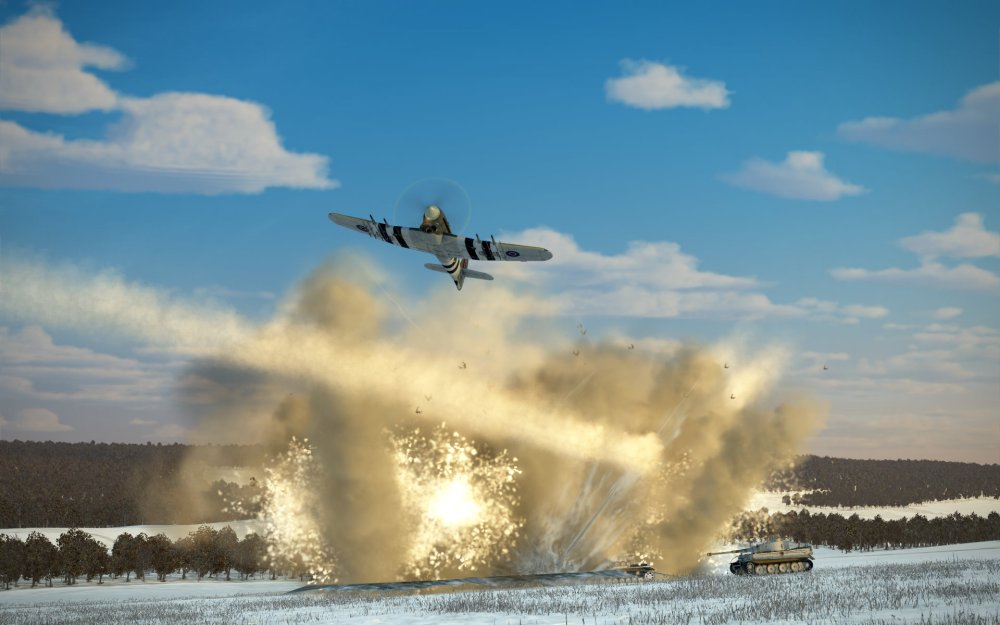
In practice on servers such as Combat Box, my friends and I often struggled attacking targets without ample escort in the area. A flight of Typhoons bombed up or armed with rockets, though not defenseless, can be bounced by alert Axis fighter patrols. We were very unlucky and unsuccessful one night, never reaching any of our target areas no matter what we did or where we went, while we found tremendous success on another night repeatedly striking targets with rockets, bombs and guns to excellent effect.
This has been a challenge for other fighter-bombers as well.
The Typhoon can absolutely dogfight with the rockets attached but it will do so at a disadvantage. With bombs it can easily drop them and although the bomb racks do leave a minimal penalty, the aircraft is ultimately combat capable and against slower foes will do well.
Other cool little details
1CGS has packed a lot into this aircraft and there are four other interesting additions that I wanted to point out.
First, a lot of Allied aircraft have recognition lights, and the Typhoon is among them. It can be configured with red, green, or yellow recognition lights. They are arranged around the underside of the aircraft and were used as a means of communicating with ground troops using the appropriate light.
Next, the Typhoon has an interesting control dial unique (I think) among attack aircraft. The gun-sight image can be depressed downwards by several degrees to help with bomb or rocket aiming. I don’t know what the ideal settings are right now but a tutorial video will be long shortly, I’m sure.
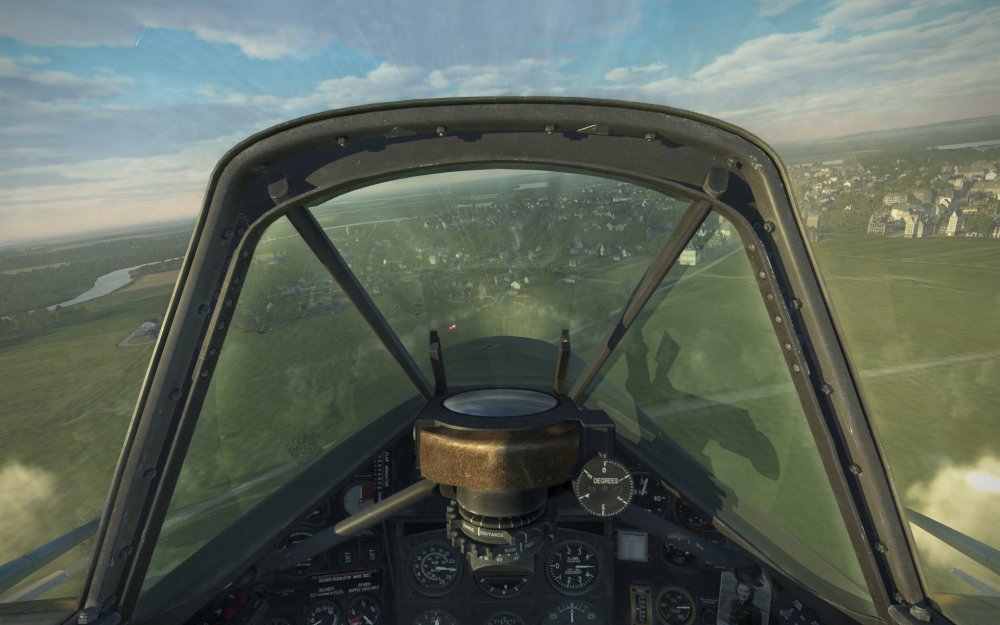
The aircraft, as I mentioned in the history section, was prone to exhaust fumes leaking into the cockpit and so standard procedure was to have the oxygen on from engine start-up. 1CGS has implemented this and the Typhoon is currently the only aircraft in the series to have the pilot wearing the mask from the start. The Tempest should also have this but as of the current patch it doesn’t yet. I do love that attention to detail, and it shows how 1CGS has been cultivating the addition of small yet immersive additions.
Finally, the Typhoon engine used something that was essentially a shotgun shell to kick the massive 24-valve engine over. You can hear that during start-up on both your aircraft and nearby Typhoons. That boom sound is the starter going off and explosively kicking the engine into action. Very cool!
Performance comparisons
For my performance comparisons I’ve put together three charts (this is the second time I’ve done this, it may need some work still) to get some general impressions. I compare the Typhoon against two contemporary fighters, the Bf109G-6 Late and the Fw190A-6 also available with IL-2: Battle of Normandy. Then I compare it against the Tempest, its direct successor, to see how different or similar they are.
For the speed comparison, the Typhoon compares favourably across the board especially with the four bladed propeller and +11lb boost engine option. Although not properly represented in the comparison, the Bf109G-6 Late is faster than even the Typhoon at higher altitudes but not by as large of a margin as I would have expected. A low altitudes, the Typhoon is superior to both Fw190A-6 and G-6Late and although slower than the Tempest, is close enough to be impressive. Not counted is how much drag the Typhoon will have with bomb racks and rockets attached which will bring its speed down.
Next we have maximum climb which again is behind the Bf109 and Tempest but with the +11lb boost engine upgrade it gets shocking close.
The maximum performance turn is a lower than the Tempest and about on par with the Fw190A-6. Like the Fw190, the Typhoon seems to be able to dump a lot of energy into a tight turn but only for a short period of time. Then that turn either has to be moderated or you’ll start to stall as the energy runs out.
To sum it up, the late war model Typhoon Mark IB is an impressive aircraft in most base performance respects and it has the firepower to capitalize on it. The only thing that really lets it down is the atrocious roll rate.
Final thoughts
As is the case recently, 1CGS has gone all out providing a wide range of modifications and options for the Typhoon. They know their audience and are catering to a lot of common asks ranging from the added boost mode on the engine to the wide variety of rocket rail installations to the little details like making sure that the dome deflector is available. It shows the detail and research that goes into a type like this and it’s really good to see!
The visuals offer a consistent quality from past efforts and are at the usual level of detail that we’ve seen from the team. Texturing is crisp with the appropriate level of wear. The cockpit has plenty of small and unique details from the Tempest and everything looks and feels like it belongs. Exterior details are similarly excellent and the Typhoon offers a good variety of exterior skins with some of the more unique schemes available. I should note that the RAF held specific standards on aircraft appearance so you don’t see many wild schemes – that’s as it should be for this aircraft. It also makes use of the new tactical codes system which is really nice to see as well.
I’m once again very excited to have this aircraft as the Typhoon has long been on my list of aircraft, I wanted to fly in a modern WWII combat sim and one simply hasn’t been around for a long time. The closest has been War Thunder but that wasn’t fully satisfying. This rendition by 1CGS offers the kind of nuance and detail that we’ve come to expect from them and its great to see.
The Typhoon is another excellent addition to the IL-2 aircraft line-up.
Videos
Learn how to fly the Typhoon Mark IB with Requiem’s latest tutorial video.



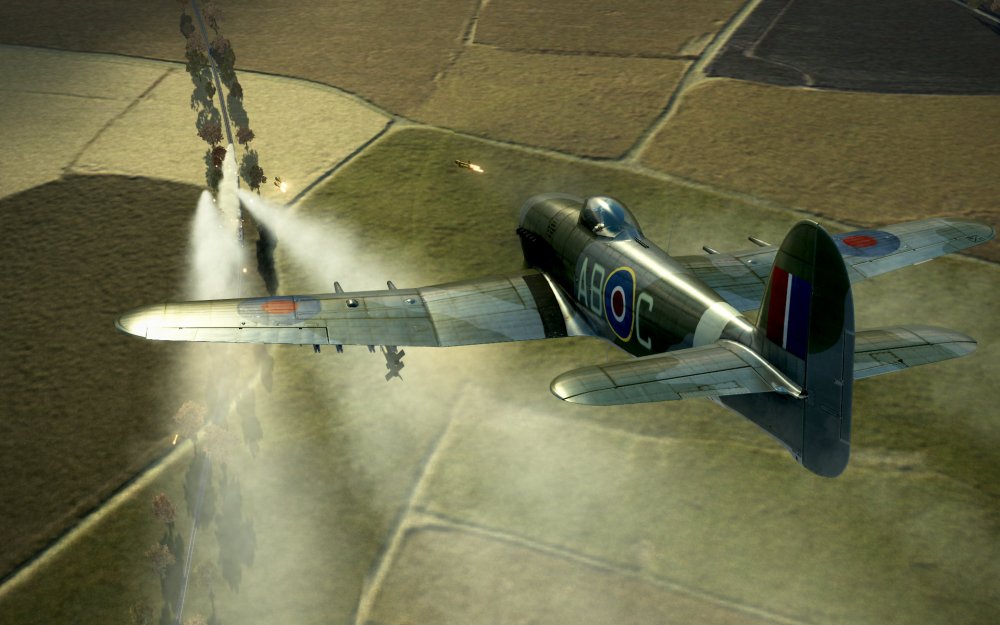



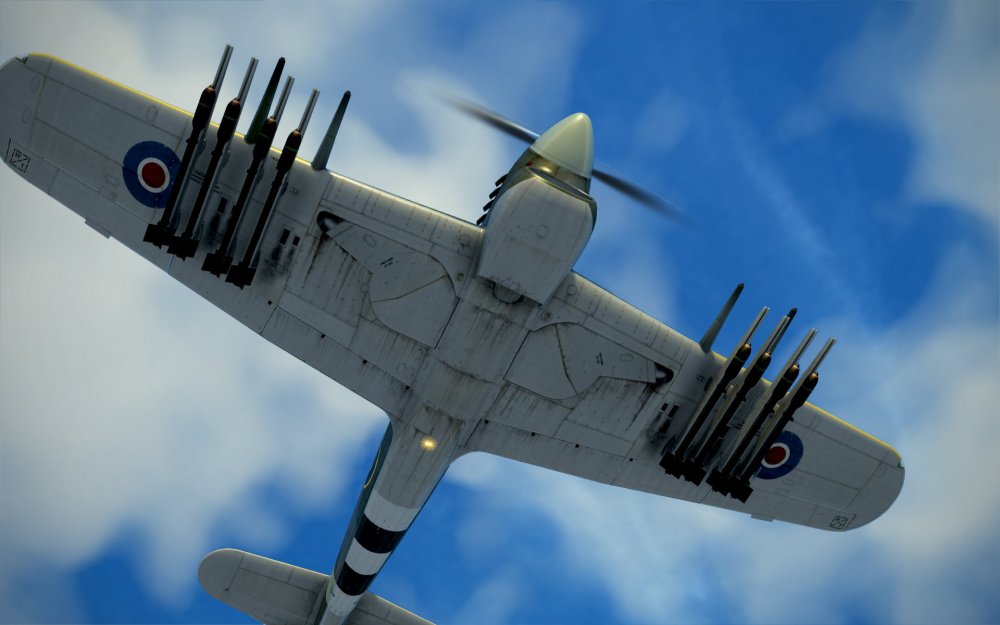
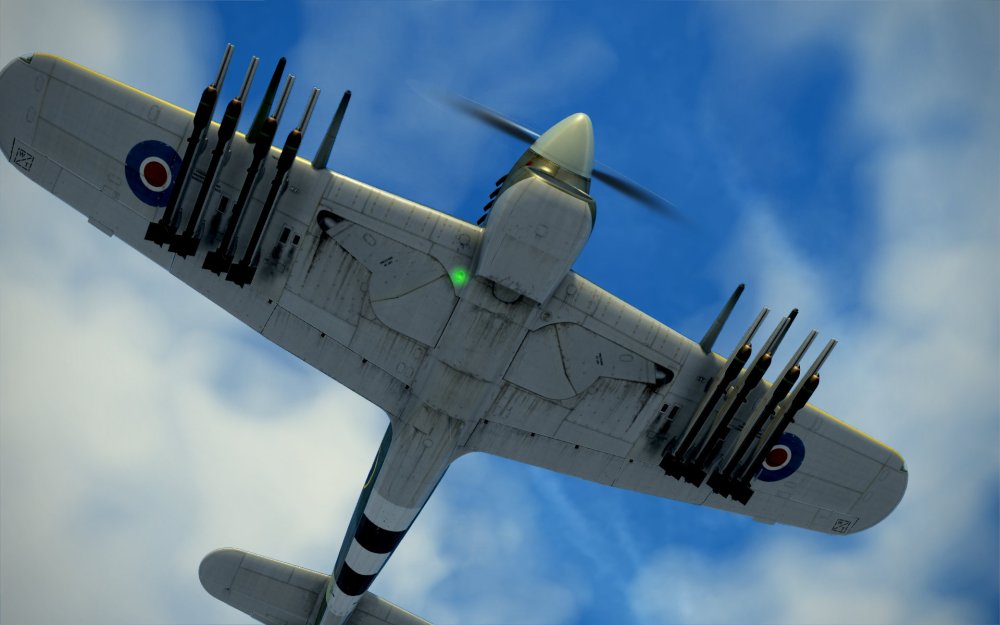






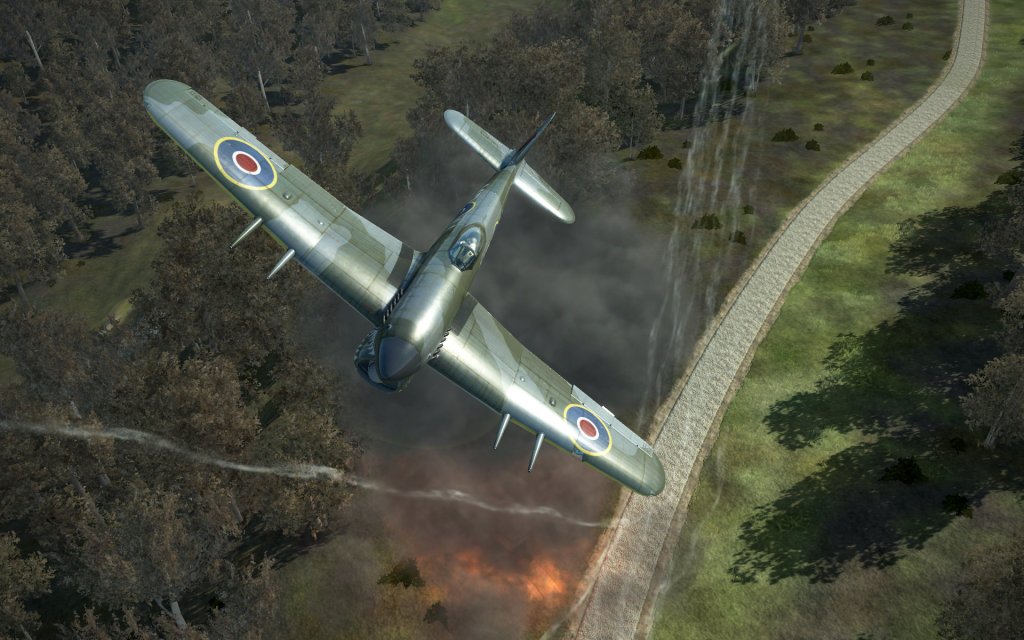


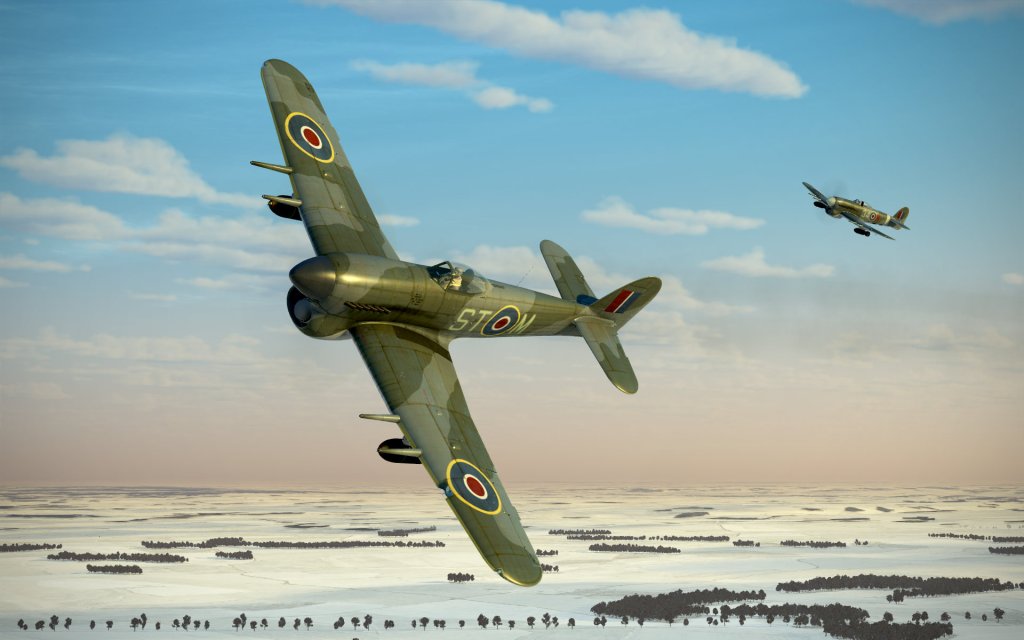
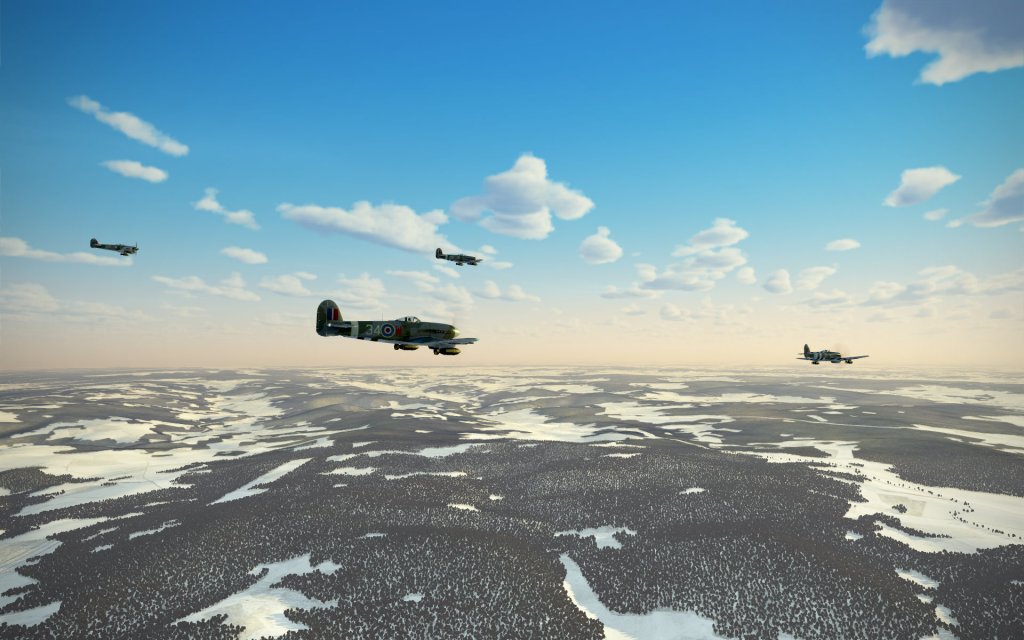

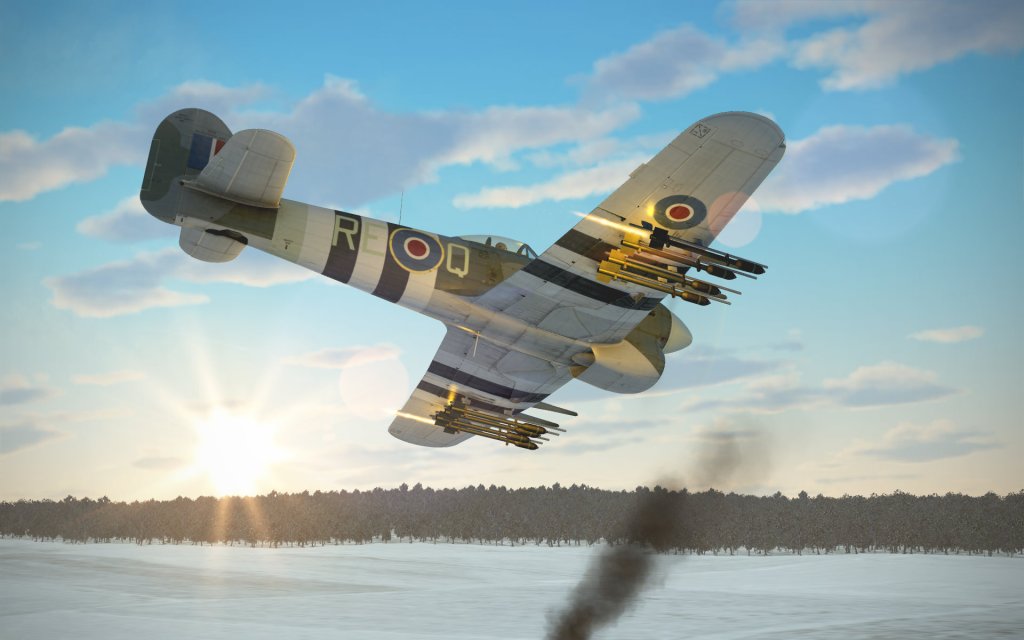


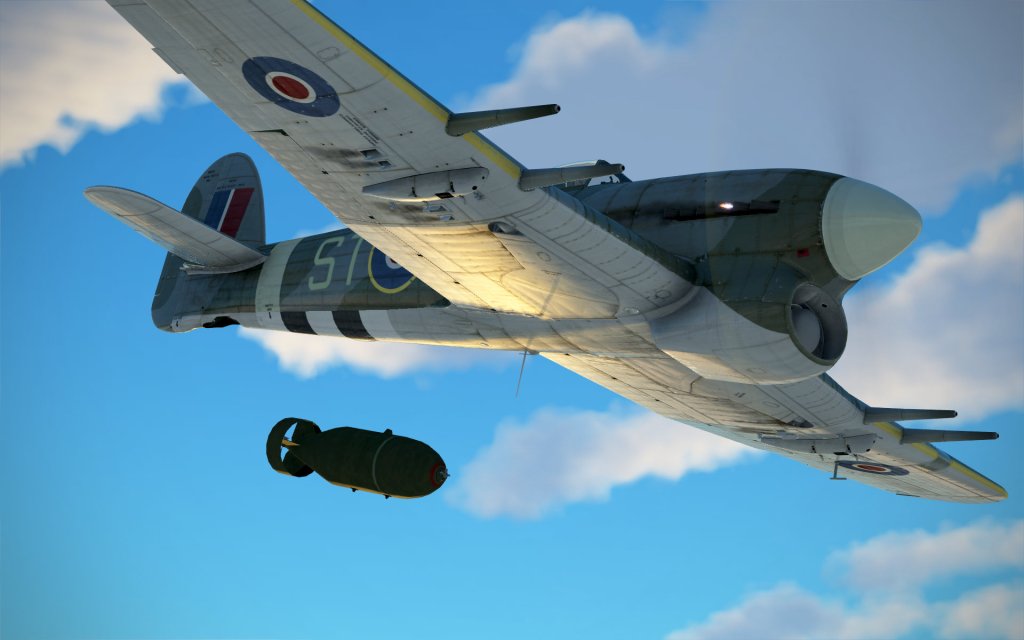
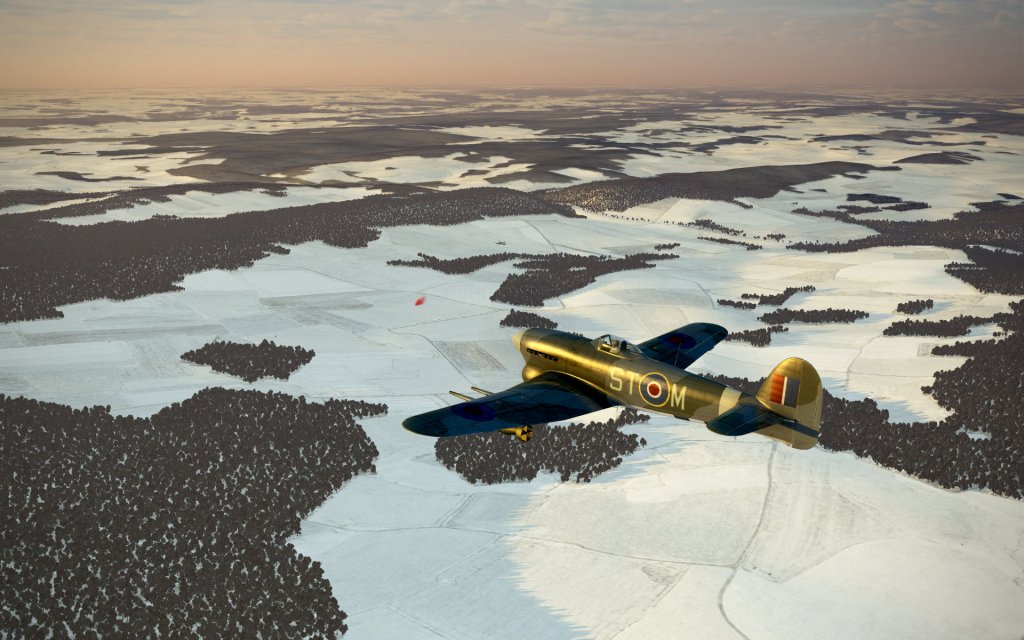
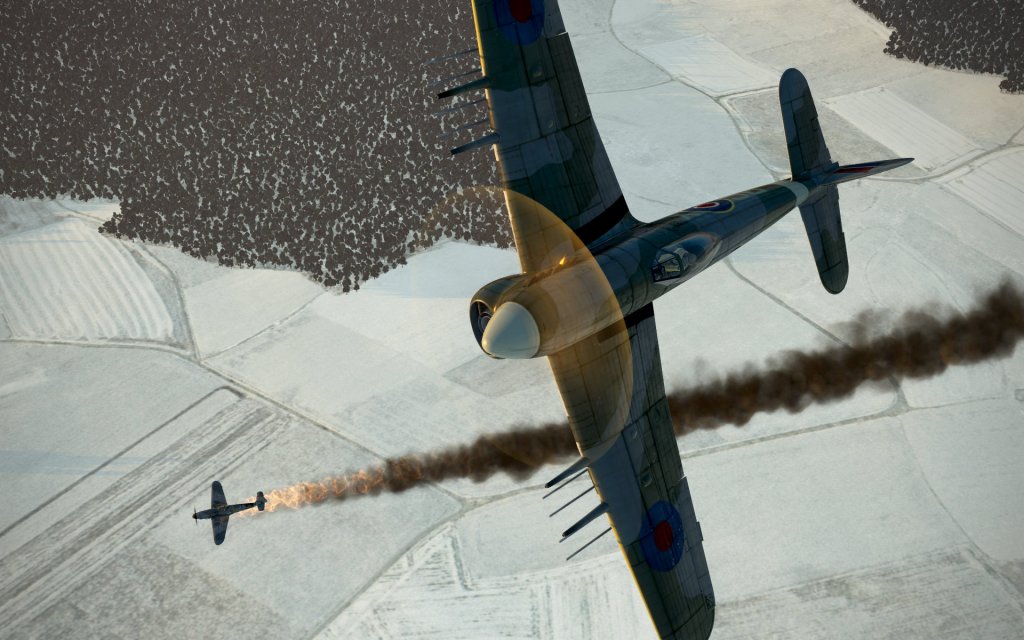
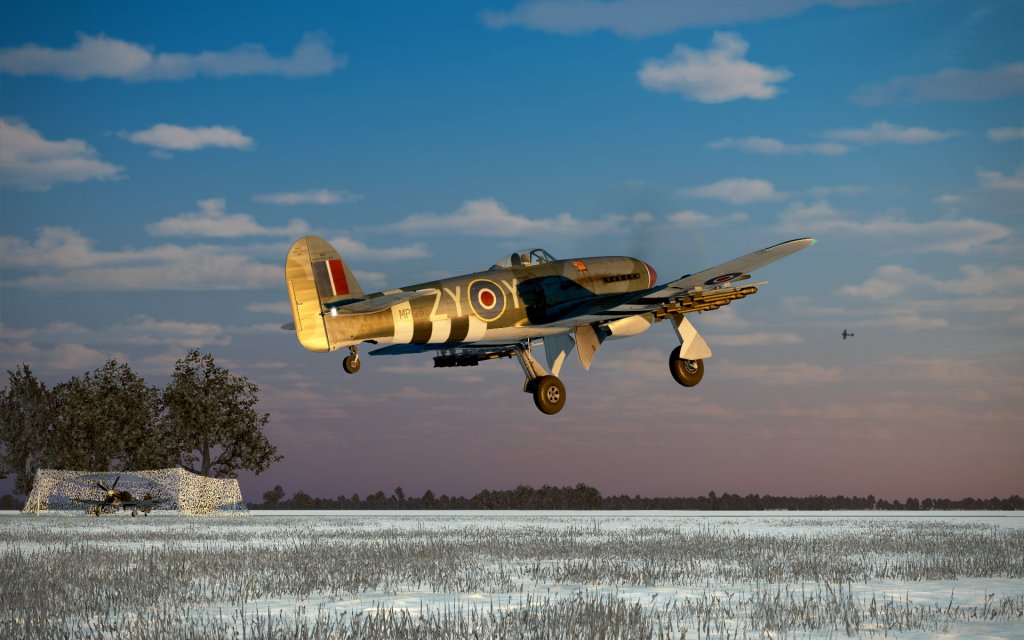




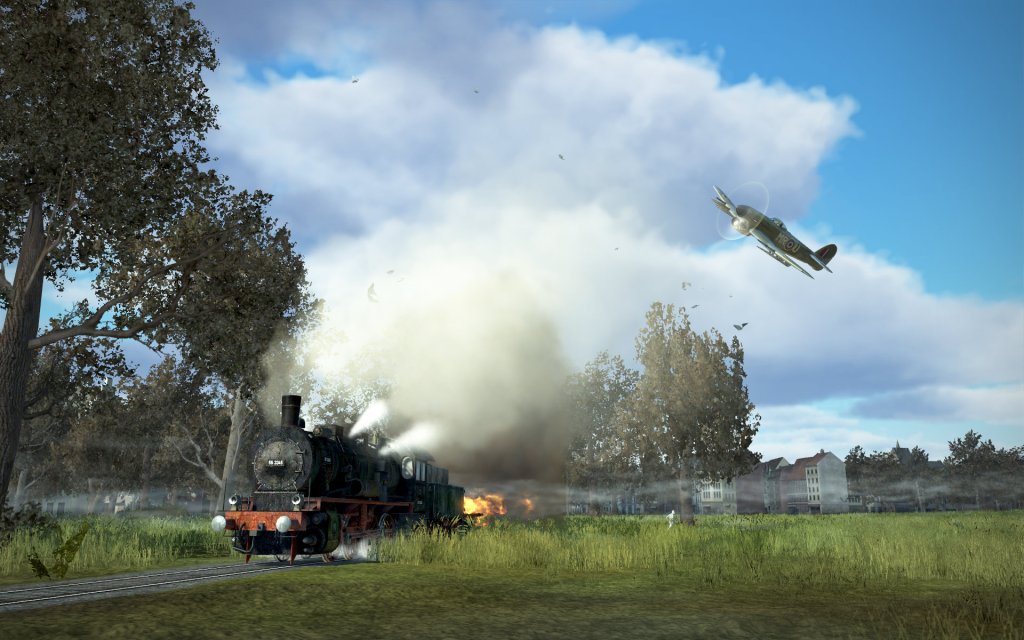


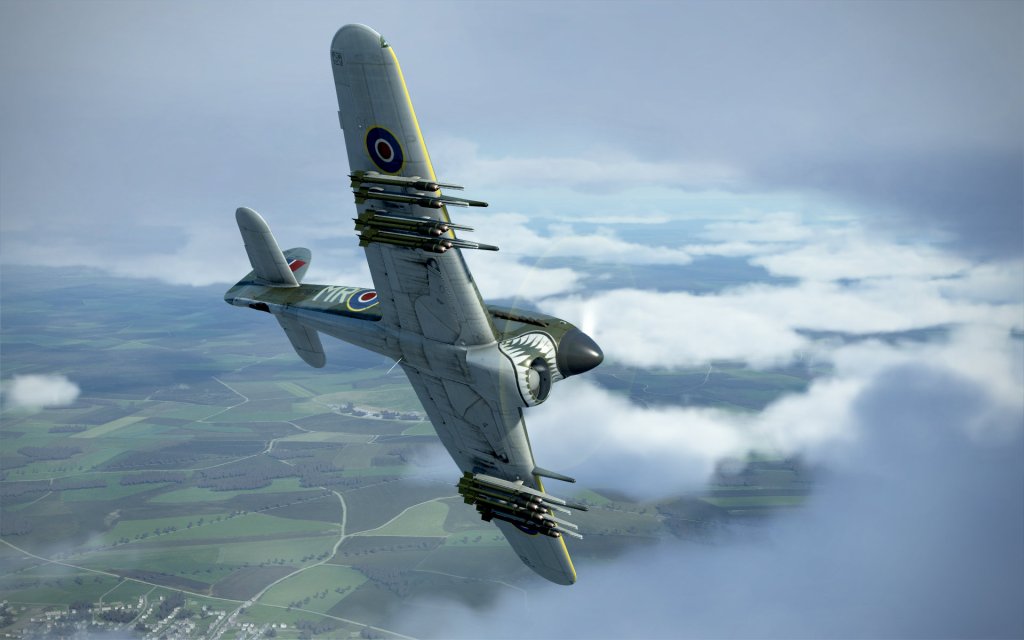

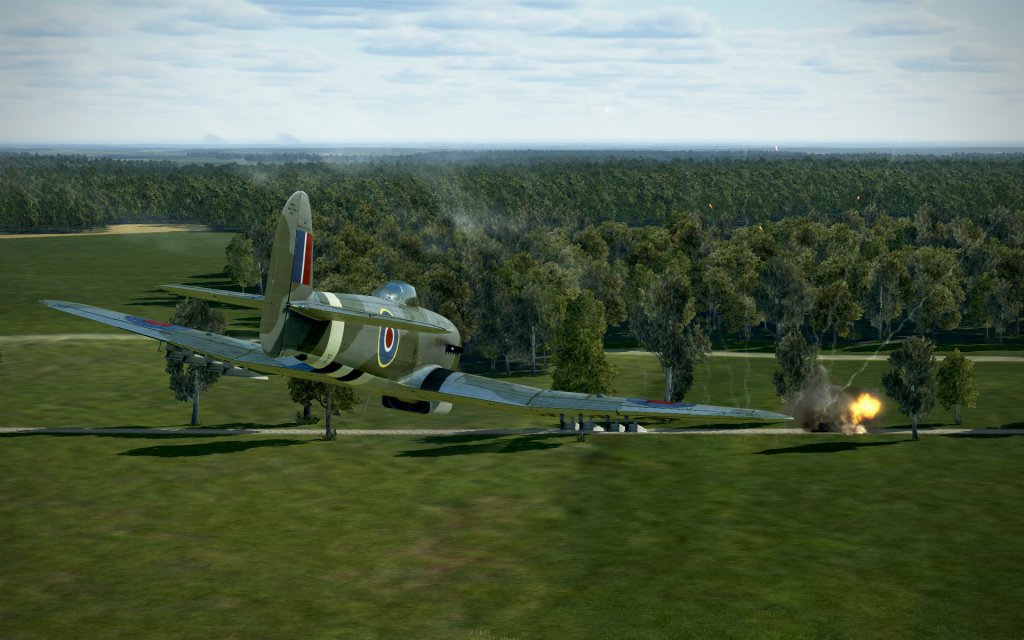
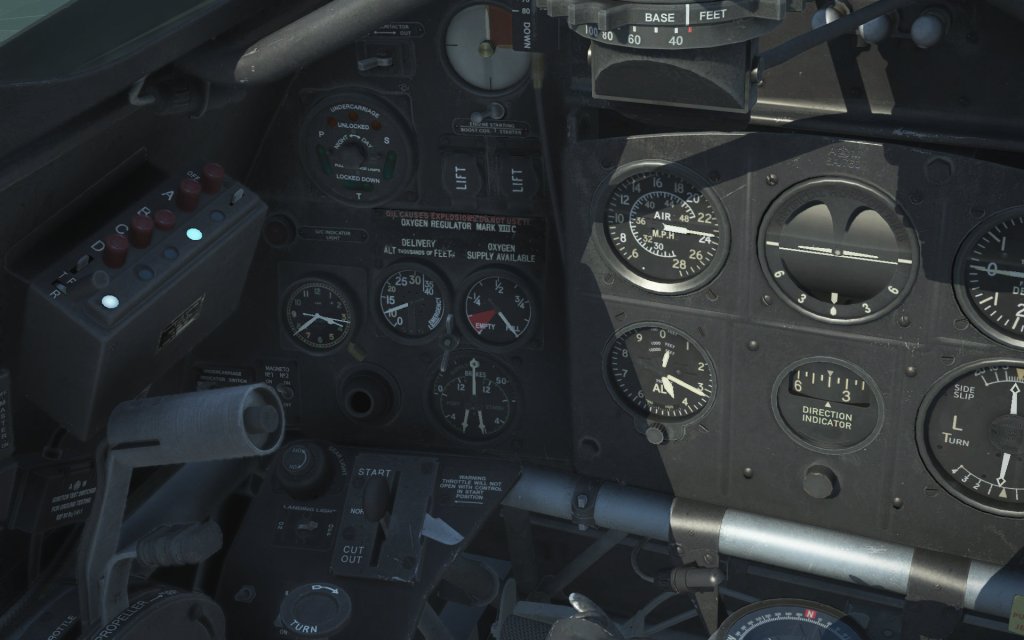

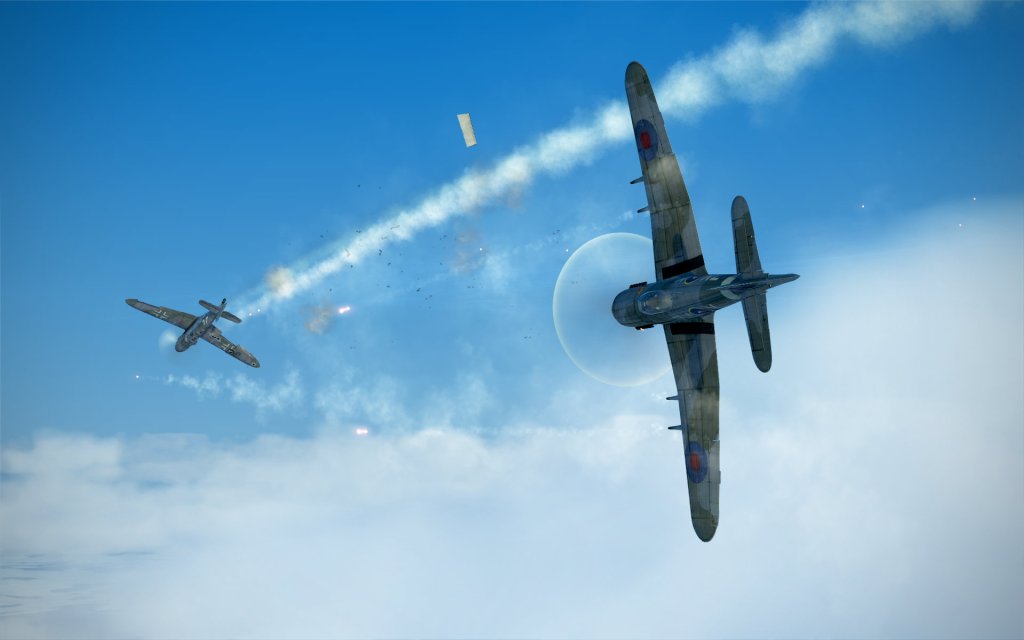

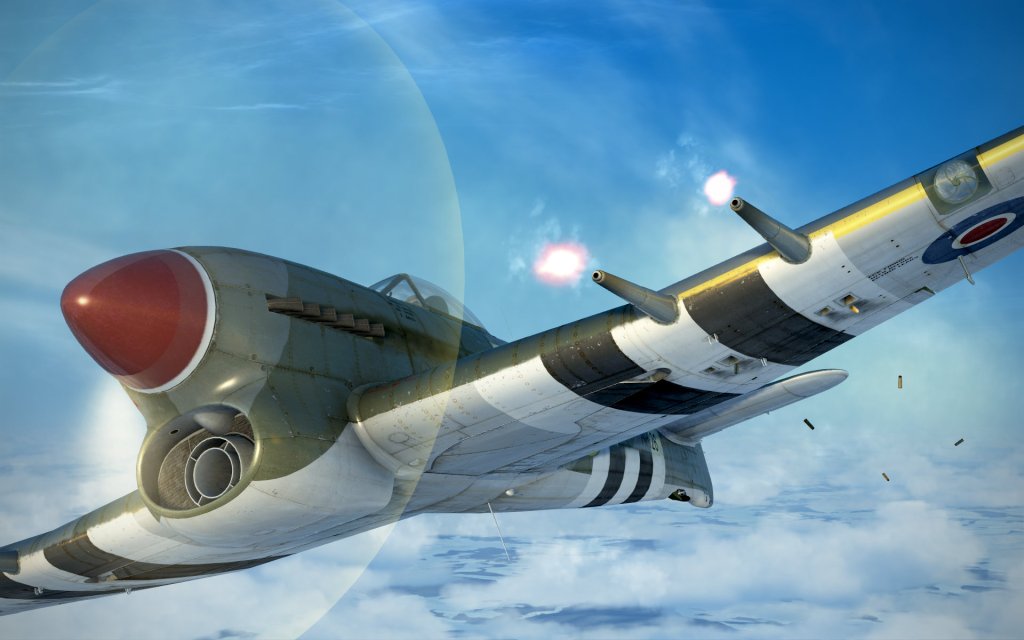




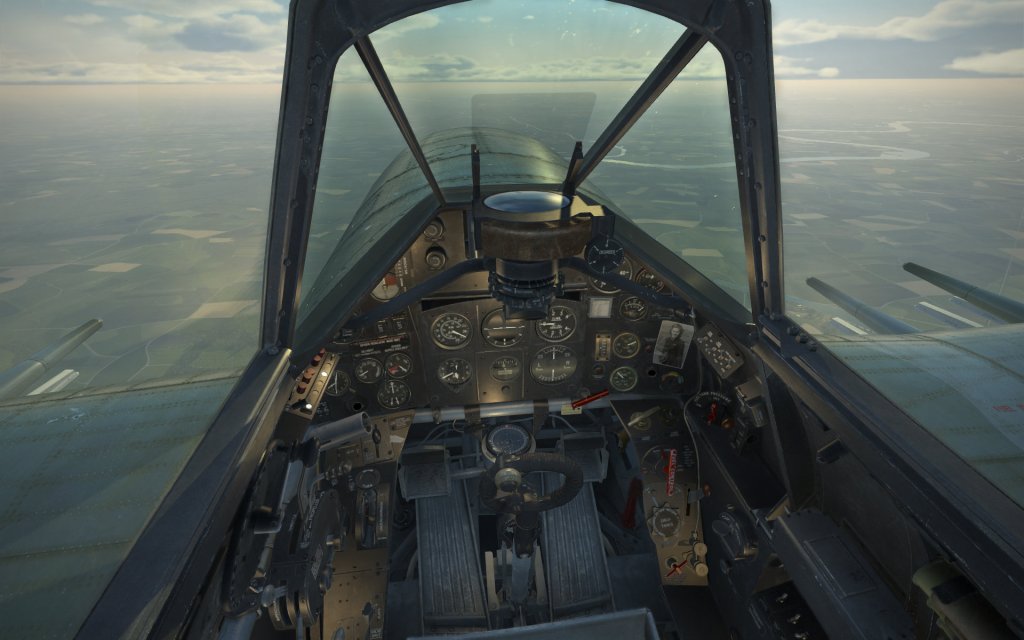
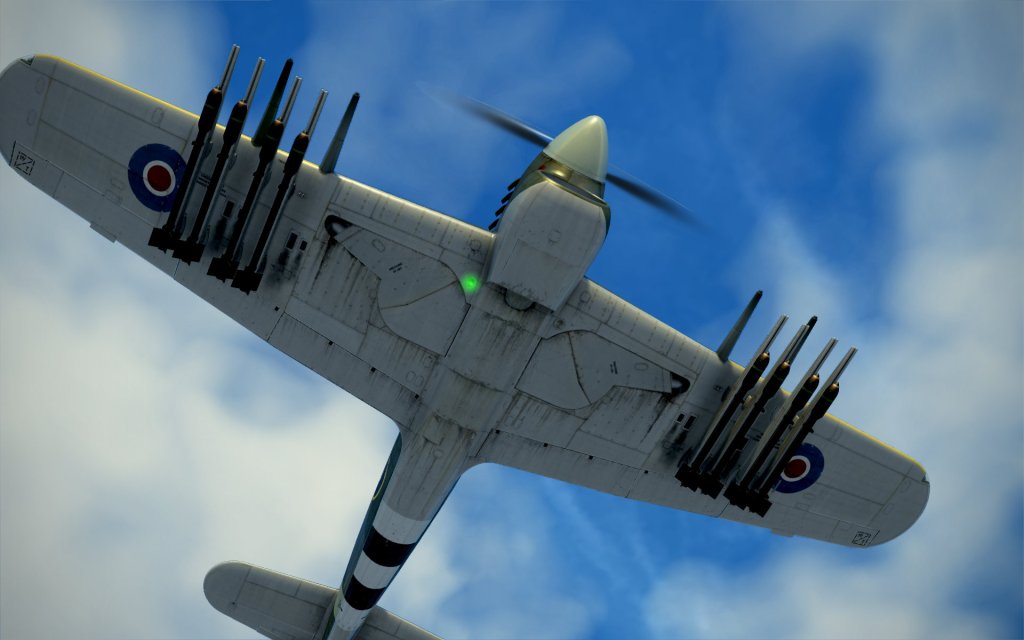
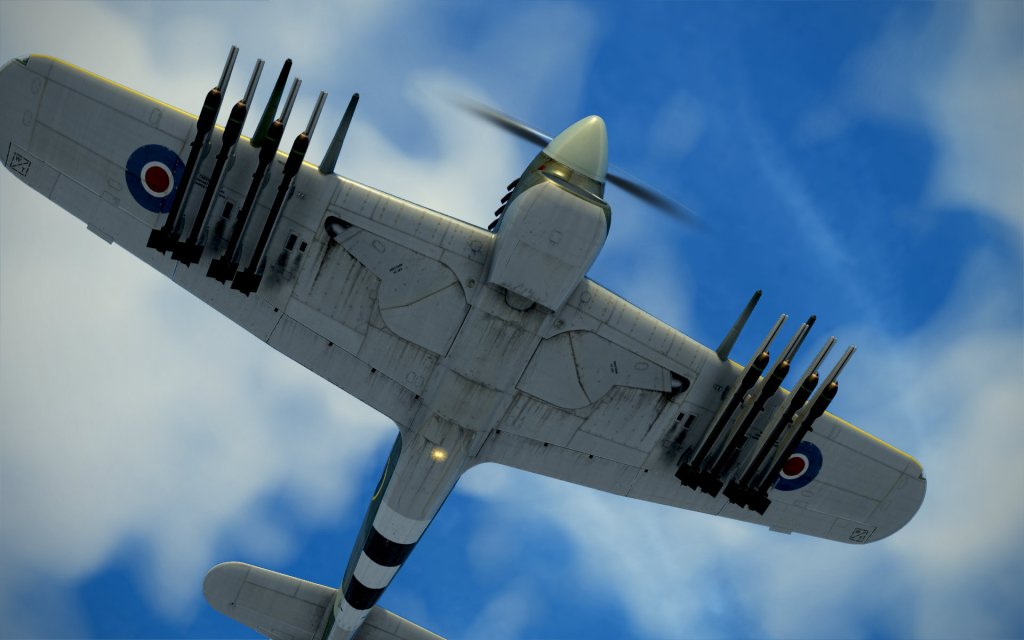


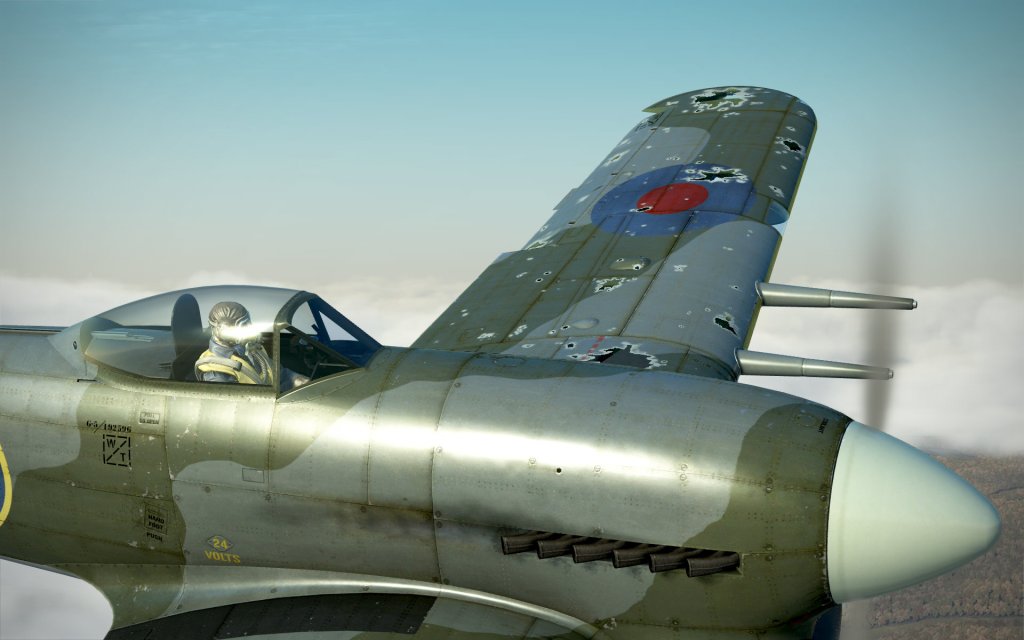
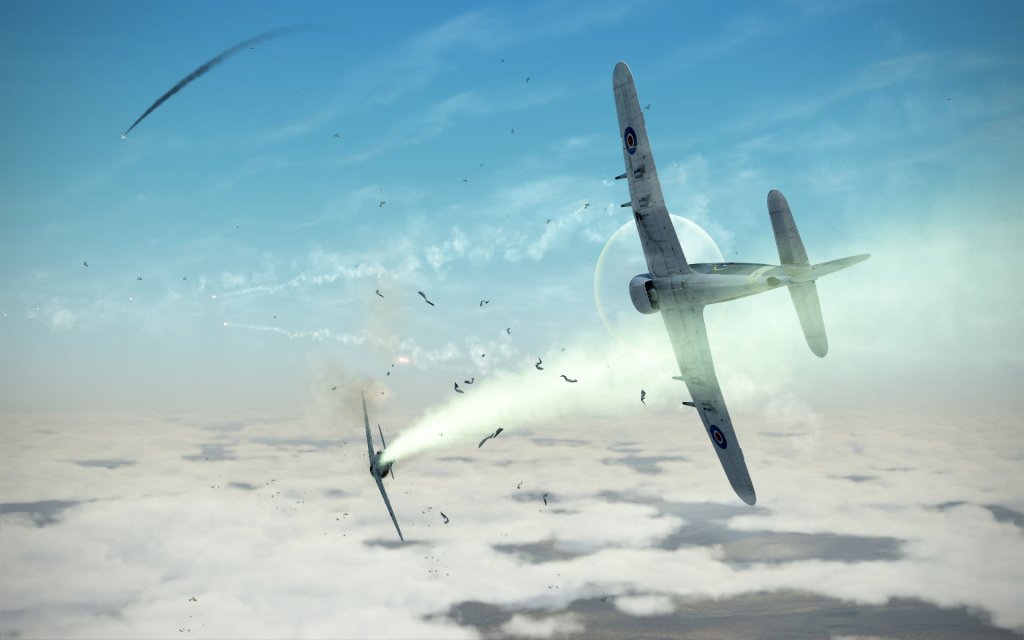
The typhoon is the first plane where i feel the rockets really is effective. Maybe because you dont need to aim so accurate since the payload is big?😆
I also find it a good fighter vs earlier fw and 190s. Dont know how good the earlier typhoons where compared to this but in this i feel i have an edge against a3-a6 and g-serie 109s 😁
LikeLike
Those RP-3 rockets really pack a punch and with eight or twelve of them you can afford a miss or two.
I’d say that it does have an edge on these aircraft. Earlier Typhoons had teething problems but when running well they were more than a solid match against them at lower altitudes – and that is a common area for most combat in the IL-2 series.
LikeLiked by 1 person
Hi. Some quick nit-picking: the Napier Sabre is 24 cylinder, not 24 valve 🙂
LikeLiked by 1 person
Right you are sir! Corrected! 🙂
LikeLiked by 2 people
Also this is (I think) the first WW2 plane in IL-2 to feature both the new dynamic visual damage thing and customizable ID.
LikeLike
I think that honour belongs to the P-51D-15 but the Typhoon comes in a close second.
LikeLiked by 1 person
Ah, right you are and corrected I stand. I hadn’t paid attention to the P51 as I’ve never flown any of the American birds.
LikeLiked by 1 person
“War Thunder…wasn’t fully satisfying” 😉
IL2 is an impressive series and packs in a tremendous amount of high quality game play. It’s great to see that 1CGS never seems to rest on their laurels – every release is more detailed, more realistic and more fun 🙂
Really appreciate your deep dives on these planes and how they fit into the game. The included historical perspective is also valuable and really helps understand how to think about using each aircraft.
LikeLiked by 1 person
Another excellent review ShamrockOneFive. Just the information I need.
LikeLiked by 1 person
Thanks! Happy to share!
LikeLike